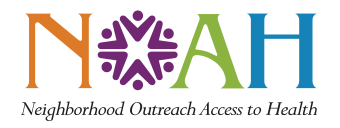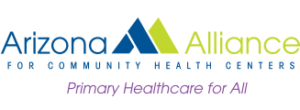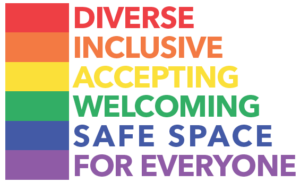Starting Wednesday Oct. 28, NOAH patients will have access to their progress notes in the patient portal, MyChart. This change is happening nationwide when all providers are required to have notes fully accessible to patients. We’ve got some Frequently Asked Questions here and will ensure your other questions get answered before Oct. 28.
What is the 21st Century Cures Act?
The 21st Century Cures Act passed in 2016 requires patients to have access to all health information in electronic medical records. This includes notes that providers, schedulers, care coordinators, and other NOAH team members enter into a patient’s notes in Epic/MyChart.
Even though HIPAA already allows patients to review medical records, this new ruling gives them access rapidly, conveniently, and securely.
Why is this change happening?
Providing open access to electronic notes to patients gives them a greater sense of control over their care and a better understanding of their conditions, without creating extra work for providers.
Where providing access to notes is already the norm, research shows most patients found the notes helpful for both patients and their caregivers in remembering important information. Most patients also felt they better understood their medication and why it was prescribed, and these patients had higher rates of medication adherence.
What notes will be shared?
There are 8 types of notes that will be shared:
- Progress Notes
- History and Physical
- Discharge Summary Notes
- Consultation Notes
- Procedure Notes
- Laboratory Report Narratives
- Pathology Report Narratives
- Imaging Notes
These include telehealth, telephone and in-person encounters and conversations, including telephone encounters that staff members other an a provider may enter into the chart.
NOAH already releases many if not most outpatient lab results, plain film X-ray and ultrasound results immediately to patients. We do delay release of some results to allow our providers an opportunity to review prior to the patients. After October 28th, this will no longer be possible with very few exceptions.
Whose notes will be shared?
Anyone who interacts with patients and their MyChart records will now have their notes shared with patients. This includes:
- Medical Teams
- • Physicians
• Advanced Practitioners
• Registered Nurses
• Medical Assistants
• Care Coordinators
- Dental Teams
- • Dentists
• Hygienists
• Dental Assistants
- Integrated Teams
- • BH Consultants
• Counselors
• Nutrition Educators
• Psychiatric Team
- Patient Engagement Center
- • Schedulers
• Triage
Are any notes NOT shared?
Yes, these are instances in which these new rules about clinical notes do not apply:
- Psychotherapy notes about a conversation or session.
Some information from sessions will be available in a patient’s notes, including session start and end times, modalities and frequencies of treatment, results of tests, and summaries of: diagnosis, status, treatment plan, symptoms, prognosis and progress.
- Information for use or anticipated use in a civil, criminal, or administrative action or proceeding.
- If withholding information will substantially reduce the risk of harm to a patient or to another person.
Such as domestic abuse situations that may increase risk for harm as a result of a disclosure in the notes.
Submit A Question
Frequently Asked Questions
When does the 21st Century Cures Act Information Blocking go into effect?
Information Blocking goes into effect 11/2/20 for US Core Data for Interoperability (USCDI).
What is Information Blocking?
The Office of the National Coordinator for Health Information Technology (ONC) defines Information Blocking as “a practice that, except as required by law or covered by an exception…is likely to interfere with access, exchange, or use of electronic health information”.
What is defined as Electronic Health Information?
EHI is patient data that’s collected and shared electronically for healthcare delivery and public health.
Electronic health information (EHI) also means electronic protected health information as defined in our designated record set regardless of whether the group of records are used or maintained by NOAH and HonorHealth.
What information will be shared with patients by default?
Initially, ONC includes the US Core Data for Interoperability (USCDI) data set, and then expands the scope to any electronic protected health information (“ePHI”) within a “designated record set,” both terms defined in HIPAA.
USCDI Data set includes:
- Allergies
- Assessment and Plan of treatment
- Care Team
- Clinical Notes
- Goals
- Health Concerns
- Immunizations
- Labs
- Medications
- Demographic
- Problems
- Procedures
- Provenance
- Smoking Status
- Unique device ID for implants
- Vitals
How will clinical information be shared with the patient?
Clinical Information will be shared via the HonorHealth Patient Portal (MyChart), and by Health Information Management (HIM) Department.
Who is responsible for monitoring compliance?
Compliance will be monitored by HonorHealth HIM department and the Audit & Compliance Services.
Are there fines for noncompliance with these rules?
Yes, there can be up to $1M fines for non-compliance.
Are there exception to sharing clinical information?
There are eight exception to this requirement: If shared information meets one of the exceptions then it is not shared by default.
- Preventing Harm: ONC and CMS does not consider disclosures that providers believe may cause harm unless there are state laws to protect the release of clinical information, such as Genetic Testing.
- Privacy: Behavioral Health/Psychotherapy Notes.
- Security: System Security policies that could prohibit disclosure such as fire walls.
- Infeasibility: Natural Disaster.
- Health IT performance: Scheduled and unscheduled downtimes.
- Content and Manner: Method of releasing information.
- Fees: Any additional fees involved with compliance with the regulations.
- Licensing: Currently licenses prohibit HonorHealth from compliance unless additional license purchased.
What are the benefits on sharing clinical information with patients?
- Patients have a greater understanding of their medical condition
- Enhanced trust in their physician
- Feeling more in control of their care
- Better compliance with the care plan and better medication adherence
- The patient’s ability to share information with family members and caregivers
- The convenience of being able to jog patients’ memory of the visit and the provider’s instructions
- Improved care coordination
How can physicians document in a patient’s record to better communicate with patients?
- BE CLEAR AND SUCCINCT
- Clear and organized notes allow patients to identify key information, facilitating patient education and engagement
- Direct and simple language, with minimal abbreviations or medical jargon, helps prevent confusion for patients and for other doctors.
- DIRECTLY AND RESPECTFULLY ADDRESS CONCERNS
- A good rule of thumb is to discuss what you write what is discussed with the patient.
- Candid wording and clearly written follow-up plans may calm fears among anxious patients who otherwise might feel overwhelmed or assume the worst possible scenario.
- USE SUPPORTIVE LANGUAGE AND LESS JUDGEMENTAL OR CONFUSING
- Rather than focusing exclusively on problems, the medical record can also underscore patient accomplishments, thereby encouraging and empowering patients to make positive changes.
- BE FAMILIAR WITH HOW TO AMEND NOTES
How important is editing reports that have either been directly entered or dictated using the front -end voice recognition (Fluency Direct/M*Modal)
All reports directly entered into Epic or dictated using front -end voice recognition must be edited prior to signing/completing the dictation/reports.
Reports that have been signed off/completed with erroneous information, or inaccurate data will still be released to patients once they are signed off. This could result in patient complaints and amendment requests from our patients. Based on HIPAA policies providers are required to review and correct record entries where such errors exist. If an amendment request is received, HIM will contact the provider to review the amendment request within 2 business days. Per HIPAA policy, HIM must respond to the patient within 60 days from date of receipt of the amendment request.


